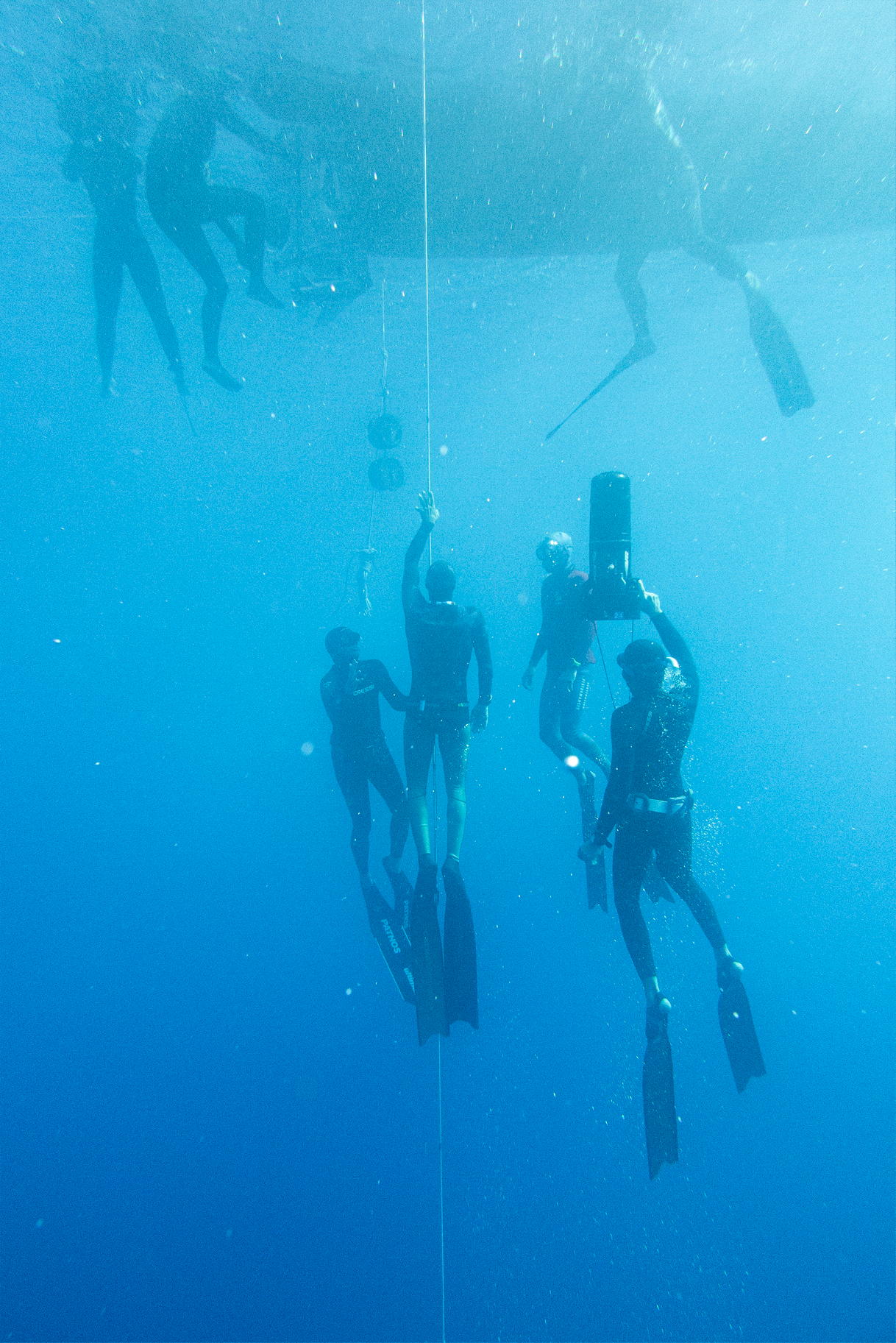Wearable tech aids freedivers, cardiac patients
Carnegie Mellon University researchers are part of an international team working on wearable biomedical technology that will enhance freediver safety, as well as provide fresh treatment insights for cardiac patients.

Source: Eric Mulder
In addition to improving freediver safety, the group’s findings offer a unique way of understanding how the body responds to low blood oxygen, low brain oxygenation and sever cardiovascular suppression.
With dives lasting more than four minutes and reaching depths of more than 100 meters on a single-breath hold, freedivers test the limits of human endurance. Carnegie Mellon University researchers are part of an international team working on wearable biomedical technology that will enhance freediver safety, as well as provide fresh treatment insights for cardiac patients.
The smartwatch-like, wearable device uses light emitting LEDs in contact with the skin to measure heart rate, blood volume, and oxygen levels in the brain. It can withstand depths of at least 107 meters.
“Before now, understanding the effects on divers’ neural and cardiovascular systems during deep dives was not possible, as research was focused only on simulated dives,” said Erika Schagatay, a professor of animal physiology who is leading the project at Mid Sweden University. “Ultimately, the diver can reach a point where hypoxic (low oxygen) blackout occurs, and they need to be rescued. One of the main aims of our research is to warn both the diver and safety personnel of an imminent blackout.”
As part of the group’s research, published in Philosophical Transactions of the Royal Society B, existing, non-invasive technology called near-infrared spectroscopy (NIRS) was adapted to withstand the extreme pressure of deep dives in the open ocean.
“NIRS is a powerful tool, which has extensively been used for measuring brain function in healthy subjects, as well as clinical populations,” explains Jana Kainerstorfer, associate professor of biomedical engineering at Carnegie Mellon. “Recent advances in miniaturizing NIRS devices enabled measurements of brain function in more natural environments. The application of NIRS to study diving physiology is particularly exciting and will help us understand how brain function can be maintained under such extreme environmental conditions.”
Studying how freedivers have conditioned themselves to tolerate bouts of extremely low oxygen and brain oxygen delivery could provide insights for pre-treatment (pre-conditioning), for surgical procedures. Perhaps the same procedures can be developed to improve protection of the brain and heart during cardiac surgery, and for post-conditioning therapeutic intervention after events such as a cardiac event.
The application of NIRS to study diving physiology is particularly exciting and will help us understand how brain function can be maintained under such extreme environmental conditions.
Jana Kainerstorfer, Associate Professor, Biomedical Engineering
“Beyond the exceptional physiological responses that freedivers display and the extremes they can tolerate, they may be a very informative physiological group,” suggested lead researcher Chris McKnight, a research fellow at the University of St. Andrews. “Their physiological reactions are so unique and the conditions they’re exposed to are not easily replicated, so they offer a unique way of understanding how the body responds to low blood oxygen, low brain oxygenation, and severe cardiovascular suppression.”
University of St. Andrews is leading the collaboration with additional researchers from Mid Sweden University, Carnegie Mellon University, and the University of Tokyo.
